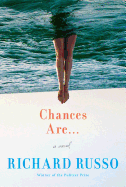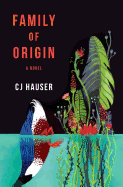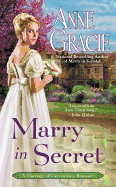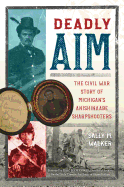
| Publisher: | Knopf | |
| Genre: | Friendship, Small Town & Rural, Literary, Fiction | |
| ISBN: | 9781101947746 | |
| Pub Date: | July 2019 | |
| Price: | $26.95 |
| Fiction |
by Richard Russo
With his 14th novel, Chances Are..., Pulitzer Prize-winner Richard Russo (Empire Falls, Elsewhere) offers readers both vintage Russo themes and something new--a mystery to be solved. Russo has always excelled at writing empathetic and compelling novels dealing with small towns, loyalty, male bonding and unrequited love. His skill as a wordsmith is matched by his sly sense of humor and clever, tangy dialogue. Chances Are... adds a mystery element to the mix and creates an intoxicating and engrossing novel.
A trio of 66-year-old men, dorm-mates in college, reunite at a Martha's Vineyard beach house to reconnect and remember Memorial Day weekend, 1971. That was the weekend the self-dubbed "Three Musketeers"--Lincoln, Teddy and Mickey--invited their beautiful female friend Jacy to join them. All three were secretly in love with her. After that weekend, she disappeared from their lives. Now, Lincoln is a successful real estate broker with six kids; Teddy is the publisher of a small university press who suffers debilitating panic attacks; and Mickey has become a hard-living rock musician. The mysterious, missing Jacy is the center of everyone's attention, then and now, as the novel continually flips back to the 1960s and '70s. Although all three were in love with her, how well did they actually know her?
As usual, Russo is the master of creating full-blooded, quirky characters who haunt readers long after the last page. Chances Are... is a rich, satisfying and splendid novel that stands among Russo's best works. --Kevin Howell, independent reviewer and marketing consultant

| Publisher: | Ballantine | |
| Genre: | Women, Friendship, Humorous, General, Fiction | |
| ISBN: | 9781984817969 | |
| Pub Date: | July 2019 | |
| Price: | $27 |
| Fiction |
by Sophie Littlefield, Lauren Gershell
In That's What Frenemies Are For, a Manhattan socialite undertakes her own Pygmalion project: trying to turn an obscure fitness instructor into a social media sensation. Julia Summers was coasting through her rarefied life: happily married, with a fancy Manhattan apartment and a daily housekeeper/nanny to help her take care of her two children. But when a plumbing catastrophe means that Julia and the children can't spend the summer in the Hamptons as usual, she's worried. Her kids attend the best private school in the city, and in her circle of gossipy, back-stabbing moms, she knows that rumors about their financial stability will start if they stay in the city.
Then a new gym, Flame, catches Julia's eye. She heads into Flame to take a spin class with an awkward young instructor named Tatum. Julia sees Tatum's potential, and decides to make Tatum her summer project. Julia works hard all summer--transforming her own body and spending thousands of dollars to turn Tatum into a sleek, confidant phenomenon. But then Tatum takes on a momentum of her own and Julia starts to worry that she's created a monster.
Fans of Lauren Weisberger will love this first novel from co-authors Sophie Littlefield (A Bad Day for Sorry; The Missing Place) and Lauren Gershell. It's witty and wicked, and will leave the reader both appalled and impressed by Julia's boldness. Perfectly capturing the catty world of upper-class mothers in New York City, That's What Frenemies Are For makes for fine summer reading. --Jessica Howard, bookseller at Bookmans, Tucson, Ariz.

| Publisher: | Doubleday | |
| Genre: | Family Life, Absurdist, Literary, Fiction, Siblings | |
| ISBN: | 9780385544627 | |
| Pub Date: | July 2019 | |
| Price: | $26.95 |
| Fiction |
by CJ Hauser
CJ Hauser's Family of Origin taps into collective anxieties with a deeply emotional story of people yearning for an imagined, better past. Nolan Grey and his half-sister Elsa travel to Leap's Island, off the Gulf Coast, where a group called Reversalists--who believe something is "unstoppably wrong with the world"--are trying to find "a science to match their sentiments," namely, that evolution is moving backward. Nolan and Elsa's father, Ian Grey, was a brilliant biologist who relocated to the island to investigate a seemingly crackpot theory. He drowned, and his children have come for his effects.
Elsa and Nolan "might have been happier if they could be forgetful, or dead, but they were not." Although they never lived together, they share a betrayal so profound it changes the course of their lives. The wounds of their relationship open on the island as they exorcise demons long submerged. Characters, even those who don't believe that evolution is reversing, often wish life moved backward. Says one, "Time and possibilities would be given back, unspent. You would see yourself stripped clean of experience and pain."
Hauser illuminates the inner lives of her characters so fully that their actions are not only believable but predestined. As the story highlights each of those on the island, showing their history back and forth in time, the climax that Nolan and Elsa trigger seems unavoidable. "Maybe humanity needed a mulligan," thinks Elsa, and readers are left to believe that humanity may be on track after all. --Cindy Pauldine, bookseller, the river's end bookstore, Oswego, N.Y.

| Publisher: | Simon & Schuster | |
| Genre: | Women, General, Literary, Suspense, Political, Thrillers, Fiction, Military, Science Fiction | |
| ISBN: | 9781982113162 | |
| Pub Date: | July 2019 | |
| Price: | $26 |
| Starred | Mystery & Thriller |
by Helen Phillips
In the lean, relentless psychological thriller The Need, Helen Phillips (The Beautiful Bureaucrat) pushes maternal instincts to the brink of sanity. Home with her two small children while her husband is away on business, Molly scrambles to protect her kids from an intruder. Their cat-and-mouse game doesn't end, however, when she confronts the sinister figure wearing a deer mask. Rather, circumstances only become more unsettling as the interloper proves to be eerily familiar with the household.
Spliced between tense scenes at home are moments from Molly's work at an archeological dig. Neighbors have been riled up ever since their discovery of a Bible, ostensibly from the 1900s, with feminine pronouns for God. This is the cherry on top of a series of inscrutable discoveries, but of course the only one that garners hate mail. "Almost a decade of mind-bending plant-fossil finds," her colleague declares, "...and no one but us and a handful of other paleobotany dorks gave a damn about this site until now."
Phillips writes with urgency as The Need's disconcerting arcs close in on one another. The stakes climb ever higher as Molly negotiates the unprecedented circumstances upsetting her personal and professional lives, but deep within the emerging uncanny valley lie primal truths about motherhood and human instinct. A truly unforgettable work of fiction, The Need upends reality for a clearer understanding of what's too important to ignore. --Dave Wheeler, associate editor, Shelf Awareness

| Publisher: | Counterpoint | |
| Genre: | Psychological, Mystery & Detective, Amateur Sleuth, Crime, Literary, Thrillers, Fiction | |
| ISBN: | 9781640091917 | |
| Pub Date: | July 2019 | |
| Price: | $26 |
| Mystery & Thriller |
by Kalisha Buckhanon
One night in December, Autumn Spencer's twin sister, Summer, walked to the roof of their shared apartment building and disappeared. Three months later, Summer's name is still not listed on New York's missing persons report, and Autumn is making no progress in finding out what happened to her sister that evening, despite increasingly panicked attempts to find answers. Was she kidnapped? Murdered? Did she jump? And if so, what happened to her body?
As Speaking of Summer unfolds, it morphs from the story of a missing person into something bigger and more deeply disturbing. Autumn's desperation to close the "gaping hole of not knowing" becomes an obsession, consuming her every waking moment even as her work, relationship, health and friendships begin to fray. She scours newspaper articles for stories of other missing women, of murdered women, absorbed by the "sad pile of tragedy" in the news and sinking further and further into a reality in which "I was not safe, no one cared about my Black female life, and unimaginable things happened to my sister."
Kalisha Buckhanon (Conception, Solemn) handles this shift so delicately that it is almost easy to forget that the story was ever about Summer, and not Autumn. Speaking of Summer is Autumn's story, Autumn's obsession and Autumn's keen desire to understand a world that dismisses the humanity of Black women, and the men who kill them, which takes center stage as Buckhanon's expertly paced novel builds to an unexpected conclusion. --Kerry McHugh, blogger at Entomology of a Bookworm

| Publisher: | Feminist Press | |
| Genre: | Dystopian, Space Exploration, Hard Science Fiction, Fiction, Science Fiction | |
| ISBN: | 9781936932627 | |
| Pub Date: | July 2019 | |
| Price: | $17.95 |
| Science Fiction & Fantasy |
by Suzette Haden Elgin
Native Tongue focuses on the power of women's collective action in a world designed to make women second-tier citizens. Originally published in 1984--prior to The Handmaid's Tale and other dystopian novels of its ilk--Suzette Haden Elgin's novel opens in an imagined American future in which women have been stripped of any and all rights, forbidden to vote, work outside the home without a man's permission or make virtually any choices for themselves. Fast-forward from these extreme rollbacks of women's rights to the 23rd century, when mankind (specifically mankind) has made contact with various alien species. A small group of isolated "linguists," known to breed children raised to be perfect alien translators, are called upon to handle negotiations with these foreign entities.
There's a lot to take in as Native Tongue unfolds, and Elgin's worldbuilding can be confusing at first. But with patience, this backdrop becomes the perfect setting for Elgin's true story: that of a group of women creating a language of their own, meant to take back not only their identities in the present but also their futures. The first in a trilogy (all three of which have been reissued by the Feminist Press simultaneously), Native Tongue is a dystopian novel about women's rights. But it is also an exploration of the role of language in shaping identity and vice versa--and the shocking lengths mankind, with an emphasis on man, will go to understand that role. --Kerry McHugh, blogger at Entomology of a Bookworm

| Publisher: | Berkley | |
| Genre: | Historical - Regency, Historical - General, Romance, General, Fiction, Historical | |
| ISBN: | 9781984802040 | |
| Pub Date: | July 2019 | |
| Price: | $7.99 |
| Romance |
by Anne Gracie
In beloved Australian author Anne Gracie's Marry in Secret, third in the Marriage of Convenience series, Lady Rose Rutherford has believed for five years that her husband is dead. Secretly married at 16 and widowed only weeks later when Naval Officer Thomas Beresford was lost at sea, Rose has locked her heart away all these years. She is determined never to love again but dearly wants children, so she agrees to a practical marriage with a duke. As she is about to take her vows, a bearded, ragged man bursts into the church and stops the wedding. Thomas has returned, and the uproar he causes at the society event is nothing compared to the chaos he creates in Rose's family and in her heart. Rose is determined to claim Thomas as her own, but he has secrets he doesn't want to share, obligations to his former shipmates and a mystery to unravel at home.
Thomas and Rose have each suffered in the years apart and are not the idealistic young couple they once were. They've grown stronger and more resilient, however, and the affection and passion that once bonded them burns just as bright, despite their emotional scars. Unfortunately, just when their marriage seems to have reached an understanding, an unknown enemy launches a dangerous attack. The threat to their lives is followed by unexpected and stunning news for Thomas, and the couple will have to rely on the strength of their love if they are to survive.
A well plotted, richly emotional and delightful read, this Regency novel brims with wonderful characters and romance. --Lois Faye Dyer, writer and reviewer

| Publisher: | Graydon House | |
| Genre: | Women, Romantic Comedy, Romance, Coming of Age, Fiction | |
| ISBN: | 9781525834257 | |
| Pub Date: | July 2019 | |
| Price: | $15.99 |
| Romance |
by Kristin Rockaway
In How to Hack a Heartbreak, Kristin Rockaway weaves a story that's both romance and coming-of-age, combining her years of experience as a corporate software engineer with modern dating and social media technology. It's told entirely from the point of view of Melanie, and Rockaway surrounds her with a diverse group of friends who are working and dating in present-day New York City.
Melanie is stuck in an entry-level IT job, enduring verbal abuse from men who work at the start-up incubator where she's employed. Inspired by harassment at work and a dating app called Fluttr, she launches JerkAlert, a site for women to notify others about men who mistreat them on the app. What she doesn't expect, however, is how JerkAlert and her distrust of dating, men and the concept of faithfulness will affect her fledgling relationship with a co-worker: "It was funny: modern technology could forge a connection between two people on opposite ends of the earth, but it could just as easily drive a wedge between two people standing side by side in the same room."
As Melanie finds ways to stand up for herself and for other women, she learns that nothing is simple and, over and over, that "the internet is truly a terrible place." How to Hack a Heartbreak is a story about love in a time of technology--the good, the bad and the giant gray area in between. --Suzanne Krohn, editor, Love in Panels

| Publisher: | Indiana University Press | |
| Genre: | Christian Living, Christian Church, Growth, Religion, 21st Century, General, History, Social Issues, Modern, Political Science | |
| ISBN: | 9780253041531 | |
| Pub Date: | July 2019 | |
| Price: | $22 |
| Starred | Religion |
by Lyz Lenz
Journalist Lyz Lenz watched both her church and her marriage fall apart in the wake of the 2016 election. Puzzled and heartbroken by the political and cultural divides, she set off to explore Middle America's small, tightly knit communities to understand the history of Midwestern Christianity and the ways it is shifting.
In God Land, her first memoir, Lenz weaves her own story with the stories of people she meets in towns and churches across the American heartland. She tells of her idealism in helping to establish a new church in Marion, Iowa, then her frustration at being silenced by her friends and her husband, as a woman who often held unpopular opinions. She explores the contradictory nature of belief in a stubborn, harsh, often isolating land: church can bind people together but it can also tear them apart.
Having written for the New York Times, Buzzfeed and the Washington Post, Lenz trains her keen journalistic eye on everyone she meets: the traveling pastors who often disagree with their congregants but feel called to serve them; the farmer who diffidently admits to finding God in his fields; the elderly woman who has lived and worshiped in the same small town for decades. Some are emblematic of the Midwest, but none of them are caricatures: they emerge as complex people, full of faith and doubt, hurt and hope--not unlike Lenz herself.
The Midwest and its people resist categorization, and Lenz admits she can't capture the full story. But her sharp, insightful prose and deep compassion help illuminate many facets of a complicated region and its ties to Christianity. --Katie Noah Gibson, blogger at Cakes, Tea and Dreams

| Publisher: | Ecco | |
| Genre: | Grammar & Punctuation, Literary Criticism, Writing, Linguistics, General, Etymology, Semiotics & Theory, Language Arts & Disciplines | |
| ISBN: | 9780062853059 | |
| Pub Date: | July 2019 | |
| Price: | $19.99 |
| Reference & Writing |
by Cecelia Watson
On the surface, Cecelia Watson's Semicolon: The Past, Present, and Future of a Misunderstood Mark is a rollicking history of the punctuation mark that people love to hate. She places its initial use by Venetian scholar Aldus Manutius in the broader context of Italian humanism, when punctuation was still experimental. She considers its role in a debate over Massachusetts's liquor laws in the early 20th century, and the larger question of the impact of punctuation on judicial rulings. She outlines arguments used by the semicolon-bashers. She reviews historical attempts to define the proper use of the semicolon.
The book also examines the different ways in which five skilled writers--Raymond Chandler, Henry James, Herman Melville, Rebecca Solnit and Irving Welsh--use the semicolon in their work. Watson concludes that the semicolon "represents a way to slow down, to stop, and to think." Alternatively, it can allow a writer to speed up the pace of her text. In short, the role of the semicolon is to measure time in the pursuit of meaning.
Watson's vision of the semicolon's purpose points toward a subversive argument that runs alongside her history of its journey from clarity to confusion. Watson argues that it is impossible to untangle the history of the semicolon from the history of grammar rules and guidebooks. Looking at grammar guidebooks through the lens of the slippery semicolon, she comes to the conclusion that the written rules of language are a barrier to communication rather than a support. --Pamela Toler, blogging at History in the Margins

| Publisher: | Simon & Schuster | |
| Genre: | Epic, Fantasy, Romance, Coming of Age, Young Adult Fiction, LGBT | |
| ISBN: | 9781534437906 | |
| Pub Date: | July 2019 | |
| Price: | $18.99 |
| Starred | Children's & Young Adult |
by Rebecca Kim Wells
Back before the Empire, when the Verran people settled Ilvera, they bonded with native dragons, "creating a society neither human nor dragon, but somewhere in-between." Then the emperor, the Flame of the West, invaded, stealing all of the dragons, "tearing out the mountain's beating heart" and sweeping a reluctant Ilvera into the Empire. Generations later, Maren loves her life on the "dragon mountain" in Ilvera, but her girlfriend, Kaia, is eager for the pair to travel "downmountain" and explore. Kaia dreams that they'll meet the "the Flame of the West himself" and be given dragons. Maren knows that "the tyrant" will "never grant a dragon to a girl from Ilvera," but Kaia is determined, so Maren will go, "even if it cost[s her] the mountain." But when the emperor's Aurati seers arrive on their customary pilgrimage, "doling out prophecies and counting up the emperor's subjects," they abruptly steal Kaia away. Knowing that "no one taken ha[s] ever returned," Maren comes up with "an impossible idea": she'll find a dragon that has not yet formed its unbreakable bond with anyone else, and storm the Aurati stronghold to get Kaia back.
Rebecca Kim Wells has crafted a top-notch dragon story. Her fantasy worldbuilding is excellent, the plot anchored by a strong young woman who feels both nuanced and real. The story builds momentum until its breathtaking finish, concluding the episode while leaving larger issues unresolved and ready to be picked up in the second installment of this promised duology. --Lynn Becker, blogger and host of Book Talk, a monthly online discussion of children's books for SCBWI

| Publisher: | Atheneum | |
| Genre: | Concepts, Anatomy & Physiology, Science & Nature, Body, Juvenile Nonfiction | |
| ISBN: | 9781534414006 | |
| Pub Date: | July 2019 | |
| Price: | $17.99 |
| Children's & Young Adult |
by Blair Thornburgh, illust. by Scott Campbell
First-time picture book author Blair Thornburgh (Who's That Girl) teams up with Scott Campbell (Zombie in Love duology) for a cheery tribute to that undersung hero, the skull.
"You probably don't think much about skulls," the narrator says to a little girl with perpetually astonished eyes and brunette pigtails. The speaker extolls the virtues of the "car seat for your brain" as the girl walks through a crowd featuring a lumberjack, a pirate, a baker and many others. A page turn reveals an X-ray-image view of every head around her, including the skulls of a pet dog, parrot and turtle. Although the child jumps in surprise, the narrator confidently refers to skulls as "a good thing." As her adventure continues through a gathering of skeletons--some playing croquet in period costume--the girl learns that skulls don't intend to scare people, and that they have useful holes "for hearing, for seeing, for smelling and breathing, and for eating grilled cheese sandwiches."
Campbell's sweetly absurd illustrations will help little ones learn not to fear the Reaper, whom he shows contentedly sipping a juice box. The quirky watercolor scenes support Thornburgh's offbeat narrative perfectly, the human characters achieving a balance between cartoon goofiness and osseous reality. Considering the popularity of Halloween and el Día de los Muertos, some families will find Skulls! a useful tool for comforting and educating young children who may find the holidays' skeleton-heavy imagery unsettling. Parents and teachers will also likely appreciate the list of skull facts in the end matter, ideal for engaging a skull's contents. This authoritatively positive demystification of cranial bones--with its recurring theme of grilled cheese appreciation--is sure to have preschool through early elementary-aged readers shouting, "I love my skull!" --Jaclyn Fulwood, youth services division manager at Main Branch, Dayton Metro Library

| Publisher: | Holt | |
| Genre: | United States - Native American, United States - State & Local, People & Places, History, United States - Civil War Period (1850-1877), Juvenile Nonfiction | |
| ISBN: | 9781250125255 | |
| Pub Date: | July 2019 | |
| Price: | $19.99 |
| Children's & Young Adult |
by Sally M. Walker
Sally M. Walker (Winnie), winner of the Sibert Informational Book Medal for Secrets of a Civil War Submarine, tells another arresting, true tale from the U.S. Civil War in Deadly Aim.
Though "Natives were not U.S. citizens at the onset of the Civil War," it is "estimated that over twenty thousand Native men fought... for both the North and the South." Deadly Aim tells the story of the Odawa, Ojibwe and Potawatomi men (as a group, the Anishinaabek) who enlisted in the First Michigan Sharpshooters Company K, the "only company in the Union army east of the Mississippi River whose enlisted men were solely American Indians." Beginning before the Civil War, Walker brings readers through the detestable Indian Removal Act of 1830, the 1838 Potawatomi Trail of Death and the 1855 Treaty of Detroit, which seemingly ended "the threat of forced removal" but instead spurred a massive grab of Anishinaabek land. The first few chapters build suspense as they introduce the men of Company K; once they reach the front lines, Walker's crisp, compelling account highlights the men's humanity and heroism in the face of brutality, terror and ceaseless, aggressive racism.
Walker patched together the many stories of bravery found in Deadly Aim by using photographs, pension files, military service records, treaty articles, personal letters, first-person accounts from descendants of the Anishinaabe sharpshooters and more (as shown in an author's note, several appendices, a glossary, a bibliography, source notes and an index). Deadly Aim highlights some of the many battles Indigenous peoples have been fighting since colonizers first came to their land, and educates on a specific time in history while also hopefully opens eyes to the current moment. --Siân Gaetano, children's and YA editor, Shelf Awareness